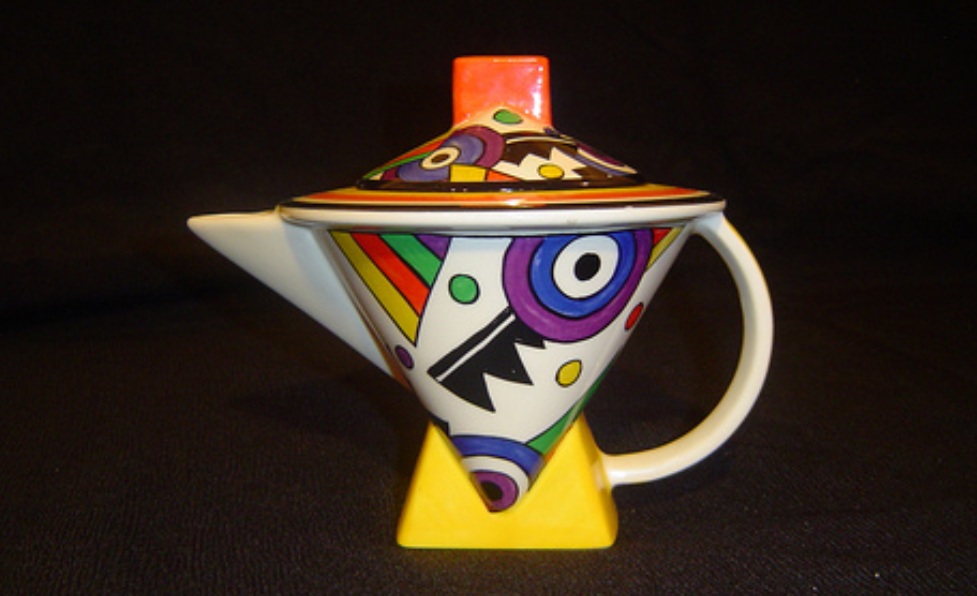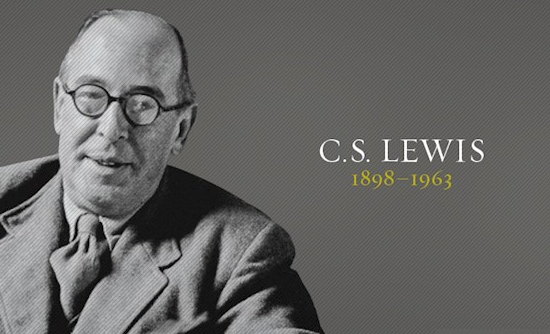
The Colour Room: Clarice Cliff’s Ceramic Vision
Women today want continual change. They will have colour and plenty of it. Colour seems to radiate happiness and the spirit of modern life and movement and I cannot put too much of it into my designs. — Clarice Cliff
In his autobiography, Me, Elton, Elton John revealed that on his tour of Australia in the late 1970s, he embarked on a cocaine-fuelled buying binge that included purchasing a Melbourne W-class tram. Built with a substantial timber frame and a steel underframe, the W-class trams were known as “rattlers”. Nadine Cresswell-Myatt describes them this way:The clickety-clack on the track, the dinging bell, the sudden braking providing opportunities to fall on a stranger’s lap. The decor was like granny’s parlour with openable windows, hard seats, antique light fittings, and polished wood.
Elton John fell in love with the classic tram and paid ten thousand dollars for it. But it cost him a million dollars (in 1970s money) to ship it back to his country estate in England. When he finished touring and returned home sober, he had no recollection of any of his Australian purchases until he awoke one morning to the sound of two Chinook helicopters lowering the tram into his back garden.
It is less well known that he also made extensive purchases of Clarice Cliff pottery while touring Australia. Paul Huckett, who worked at the time at McPhee’s Antiques in Chapel Street, Prahran, told me:
Elton was introduced to a number of art and antique dealers. They were all dealers with Clarice Cliff. I think the dealer who took Elton around was possibly Barry Humphries’ best mate. Barry may have told Elton to look him up. Leonard Joel’s Auction House used to get huge amounts of Clarice Cliff. Elton bought every good piece he saw … I sold him three pieces but specialist dealers sold him huge amounts. There was a shortage in the market for six months.
The Colour Room (2021) is a British biopic about the revolutionary British Art Deco ceramic artist and designer Clarice Cliff (1899–1972). Directed by Claire McCarthy, from a screenplay by Claire Peate, it stars Phoebe Dynevor as Clarice Cliff and Matthew Goode as Arthur “Colley” Shorter, Cliff’s employer and future husband.
The year is 1916. The film opens on the belching conical stone smoke stacks of the Hollinshead & Kirkham pottery factory, in Tunstall, Stoke-on-Trent, Staffordshire. A room is filled with young women sitting at tables and hand-painting rows of white cups. A man enters and announces loudly that someone has been stealing clay and will be caught and sacked. Clarice Cliff has been given off-cuts of discarded clay to practice on, but taking it home is against the rules. She is fired.
At home, a bustle of Cliff sisters gather around a seamstress’s dummy. The family is poor but all the girls share a love of dressmaking. Clarice tells her mother that she has lost her job. Her mother is concerned how they will pay their rent without Clarice’s income. Clarice’s older sister Dorothy is not well.
Clarice takes a lower-paying job at the Wilkinson pottery factory where she works beside a renowned designer, Fred Ridgeway. She had been a “paintress” in her previous job but now is relegated to grinding powder and line lithography, a step down in position and wages.
The upper-class factory owners Colley Shorter and his brother Guy are arguing about the future direction of the company. Colley wants the company to be more innovative but his brother thinks the safest way forward is to continue with the conservative Wilkinson designs they are known for.
Clarice practises modelling with discarded clay fragments that Dorothy’s boyfriend, Reg, has given her. Reg, a firer at the Wilkinson kilns, is found out and dismissed. An angry Dorothy tells Clarice that she will be sacked as well when she goes in to work the next morning.
But Colley Shorter has become impressed with Clarice’s ideas and instead of firing her, promotes her to the modelling department at twice the wage. He starts to affectionally call her “Cliff”. She is the only female in the all-male department and the boys are not happy. She is appointed lead designer of the Toby jug range, popular with working-class men, and soon introduces the radical idea of a Toby jug range for women.
Dorothy, who has been referred to a specialist at the hospital, warns her: “Don’t go flitting factories again because you’re bored!”
Colley is impressed by the scope of Cliff’s nascent ideas and gives her more freedom to follow her vision. The company is desperately trying to stay afloat in trying times while competitors are going out of business. Colley’s wife, Ann, asks Clarice to do a bust of her.
The “Colour Room” is a restricted studio in the factory where the extensive array of paints, powders and tints are stored. The room is always locked but Clarice is finally allowed access. She discovers that she can restore discarded pottery pieces that have hairline cracks, using triangular shapes and further glazing. This idea means a financial windfall, at little cost, for the company.
Guy Shorter dislikes Cliff’s stubbornness and would have fired her long ago if he had his way. He believes she is a threat to their business and their family unity.
The company refuses to allow Cliff’s speculative Bizarre range to be released under the Wilkinson name for fear of damaging their conservative reputation, but Colley offers her their disused Newport factory building and says they will put out her colourful pottery under her own name.
An accident occurs at the factory which destroys the traditional collection of work that had been intended for an imminent trade fair. Clarice suggests that she can meet the deadline with her own pieces, using the paintresses in her Newport factory. There is resistance to the idea at first but, having no other option, Colley decides to let her go ahead.
She and Colley soon begin an affair. Shorter is seventeen years her senior and married with children.
The trade fair is a financial disaster, with the lowest sales in the company’s history. Accounts show that Wilkinson’s will only be viable for another six months. Cliff’s designs are too strange for conservative male buyers.
With money running out, Guy Shorter orders Clarice to sack the women who are working for her, without allowing them to return to their previous jobs. She is sent back to work on Toby jugs, using cheaper enamels.
Colley has not been seen in the factory since the trade fair. Clarice discovers that he has cancer and has kept it secret. He is slowly recovering but has apparently lost his spirit for business.
Dorothy unexpectedly dies during a routine procedure, from an undiagnosed heart condition.
Clarice has an insight that although her Bizarre line did not appeal to the conservative male buyers, if they can promote it directly to women, who uniformly love it, they might find a lucrative parallel market, in the same way that lipstick, cosmetics and women’s magazines have succeeded by being pitched directly to women. She approaches the out-of-work paintresses and they agree to help her. Together, using bits and pieces from the workshop, they create a ten-foot-tall colourful promotional ceramic giraffe made out of Bizarre plates, saucers and cups.
She arrives at the company board meeting with a group of her Bizarre girls wheeling in the giant giraffe. Guy Shorter is outraged and wants to throw her out but Colley suddenly emerges from the back of the room.
Cliff tells the brothers that the reason the trade fair was not successful was that it was attended solely by men, who could not relate to the bold new colours of her pottery. She is emphatic that women, however, want colour and they are the ones who will buy it.
Colley and Guy allow her to set up a display in a local shop window, with a dozen of her Bizarre girls wearing French berets and painting on plates, to catch the attention of passing women in the street. The exhibit attracts wide press coverage and soon orders are coming in.
The Newport factory is back in action and the Bizarre girls are re-hired at higher wages. The Palace has even made contact: Queen Mary wants a set of Bizarreware! Clarice tells Colley of her newest idea: strange shapes, rectangles, cone-on-cone vases and flat-sided teapots.
Over the closing credits, we hear recordings of the actual voices of some of the surviving Bizarre girls talking about their experiences. One woman says that they all believed that, despite his marriage, the upper-class/working-class relationship between Colley and Clarice was a kind of inspiring fairy story.
The Shorter family earthenware family business was started in 1872, by Colley Shorter’s father, Arthur Shorter. In 1898, Colley joined the business and, in 1905, it became A. J. Wilkinson Ltd. Arthur Shorter died in 1926, and in 1933 the business was incorporated as Shorter & Son, with Colley and Guy as directors.
Colley was a creative salesman who conceived the idea of personalising Clarice Cliff’s designs with her signature. The progressive ceramic company promoted themselves as manufacturers of “Art Pottery, Coloured Glaze Flower Pots, Fancies, Jugs, and Toy Tea-sets”.
In those days the working class were not encouraged to write about their lives, and Clarice Cliff did not leave any letters or journals, other than her pattern books, that might tell us more about her personal life, so very little is known about her outside the pottery business. She had two brothers and four sisters, Hannah, Sarah, Ethel and Dorothy, and all five girls shared a passion for dress-making.
They lived in the pottery town of Tunstall. As in mining towns, just about everyone looked to the local factories for employment. The Staffordshire potteries were notorious for the filthy smoke they produced and the consequent grey streets, grey skies and smoke-stained buildings. An article in the 1919 Pottery Gazette in Stoke-on-Trent declared: “No man can appreciate and produce things of beauty whose colour sense is outraged every day by the grime and soot that covers everything.”
George Bernard Shaw said, “I have only been in the potteries for a day … fearfully ugly places. How do you stand it? I suspect that the people of the potteries are mad. I wanted to get into fresh air, but the more I went up the hill, the worse the air got.” But the locals were loyal to the companies that helped them support their families, with wry sayings such as “smoke spells business” and “this place soots me nicely”.
At thirteen years old, inspired by her aunt, who had been a ceramic hand-painter, Cliff started in the trade as a gilder, adding gold lines on traditional designs. At seventeen, she began working at Royal Staffordshire Pottery (Wilkinson’s) in Burslem, managed by Colley Shorter. The factory sat alongside the Trent-Mersey canal, which delivered coal and the raw ingredients for the earthenware. Rather than mastering one skill, as the other women did who worked in the factories, Cliff expanded her abilities into figurine and vase modelling, hand-painting, outlining and enamelling. She kept extensive notebooks of her designs. Will Farmer, a Clarice Cliff expert, who acted as a historical adviser on the film, said she had to work “under the greatest of secrecy, because plagiarism was rife”.
After the death of his wife Ann in 1940, Colley Shorter married Cliff, who became artistic director of the group of potteries. They moved into his Chetwynd House estate.
Although Shorter recovered from cancer in the 1960s, he continued to suffer from ill health, which, added to the stiff competition in the pottery industry, contributed to the faltering of the firm. When he died in 1964, Clarice Cliff-Shorter sold A. J. Wilkinson Ltd and the Newport Pottery Co Ltd. She retired and became a recluse until her death, in 1972, at Chetwynd House.
Kevin Maher of the Times called The Colour Room “a smoky tale of self-belief and ceramics … Dynevor tackles [it] with the vim of a young Pitt or DiCaprio, bringing a giddy dynamism to the most humdrum moments.” Cath Clarke of the Guardian called it:
…an entertaining feelgood period drama, a bright and upbeat film that perhaps comes over as just a bit strenuously cheerful in places … Here and elsewhere I wondered if the film-makers have softened the edges too much, not wanting to risk making us feel bad or uncomfortable. Even the smoke chugs picturesquely out of factory chimneys.
When Clarice Cliff first joined the Wilkinson’s pottery business, her sister Dorothy—also known as Dolly or Dot—had already been working there as an artistic director. Dolly was an accomplished seamstress and ran her own paint shop for the company. She was a talented artist and designer and created memorable patterns for Wilkinson’s tea and coffee sets, in the tankard shape, with bold floral designs, beautifully hand painted, in freehand, not outlines. She also supplied Clarice with many of the young women who helped create her Bizarre range. Dolly died in her thirties. Today her works are even rarer than those of her more famous sister.
In 1982, the Clarice Cliff Collectors Club was formed. The club’s founder located twenty-eight former paintresses, who still called themselves the “Bizarre Girls”, who were thrilled at the renewed interest in the pottery they had hand-painted for Cliff fifty years earlier.
The Colour Room is a beautifully shot period drama which Ed Power of the London Telegraph called “The Downton Abbey of jazz-age-ceramicist biopics.” I consider it on a par with the great films on visionary women artists such as Frida (2002), about Frida Kahlo, Miss Potter (2006), on Beatrix Potter, and Camille Claudel (1989), on the French sculptor.
It is not known if Elton John still retains any of his Melbourne Clarice Cliff purchases, but Paul Huckett notes that “No Elton auction has ever included any, so he must still have it.”
As for the W-class trams, fortunately there is a moratorium on selling them overseas. Visitors can still experience their rare charm on the Melbourne City Circle line which runs around the CBD. The classic dinging bell. The lurch and sudden falling on someone’s lap. And all for free. No helicopters necessary.




